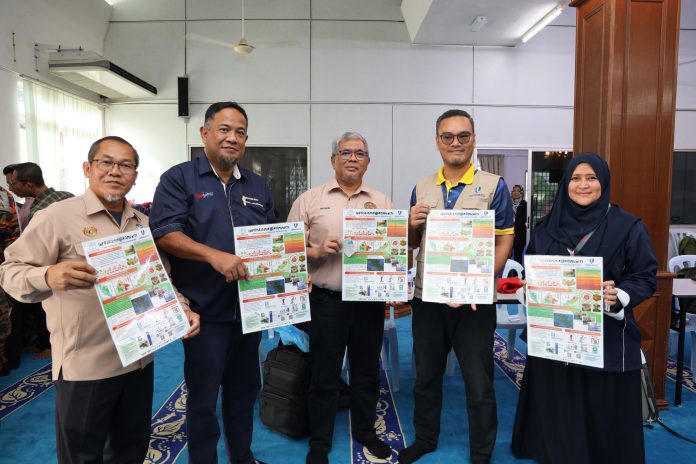
On 20th September 2025, the Segamat 2025 Earthquake CBDRM Preparedness Programme was held at the Segamat City Mosque Hall, Johor.
SMART Malaysia, Department of Minerals and Geosciences Malaysia (JMG), Segamat District Malaysian Civil Defence Force, Malaysian Disaster Response Special Expert Organisation (SPEAR CDA-03), National Disaster Management Association (NADIM), RED A Humanitarian Development Global, and IMSHA’s winner, Ihsan Johor, Segamat District Office, Natural Disaster Research Centre, Universiti Malaysia Sabah, collaborated with the National Disaster Management Agency (NADMA) to organise this programme.
The programme was officiated by Haji Hussain bin Moh, Deputy Director General of NADMA Malaysia, with the opening gimmick of safety helmets put on by the Deputy President of Ihsan Johor, Mohamed Ridza Busu; President of SPEAR CDA-03, Mohamed Noor Suleiman; and Director of JMG Johor, Noorazhar Ngatimin.
A lecture on earthquake risks and threats, earthquake emergency preparedness training, an introduction to first aid and injury types, disaster preparation: Psychological First Aid (PFA) & the significance of grab bags, and a community workshop: risk mapping and action plan & direction were among the many fascinating events and modules that were conducted.
The SMART team shared SMART’s role in helping to deal with a disaster and shared their experiences involved in earthquakes in Myanmar and Turkey.
Stress Management was presented by SPEAR (Dr. Suhaila and Dr Nor Rahidah, Psychiatrists from Hospital Permai Johor Bahru) for the community to deal with stress when facing a disaster.
Ts. Dr Noor Sheena Herayani Harith (NDRC UMS Research Fellow) and Eldawaty Madran (NDRC UMS Research Officer) provided exposure and shared information and experiences on the earthquake that occurred in Sabah. At a magnitude of 6.9, the earthquake in Sabah had a worse impact than what happened in Segamat. In fact, there are still villagers who are traumatized to this day.
Therefore, it is hoped that the sharing presented will be able to provide a basis for the community in Segamat to be aware and take the right action to ensure life safety. Next, he concluded the briefing with a simulation of When an earthquake occurs.
In the Disaster Risk Mapping Module guided by Roslan Ghani (NADIM), the participants were divided into 5 groups according to village, to produce a Community Action Plan in the event of a disaster, especially an earthquake.
This disaster risk mapping was adapted from the methods used in Japan to get a complete image of the inhabited region so that the appropriate, methodical, and efficient steps may be made in the event of a disaster. The neighbourhood will be aware of what’s in the residential neighbourhood, particularly the safe places to go in case of an emergency.
Village Heads participated in the presentation session, and facilitators from NADIM, UTHM, UTM, the Fire Station, and APM helped with this mapping workshop.
In order to improve community-level preparedness for disasters, this initiative, which is in Series 1 and 2, involves communities from the Pemanis and Buluh Kasap constituencies.
Johor has experienced two weak earthquakes: a 4.1-magnitude one in Segamat on 24th August at 6.13 am, and a 2.8-magnitude one in Yong Peng at 9.00 am.
MetMalaysia then reported a 3.2-magnitude earthquake in Segamat at 8.59 am on 27th August, with tremors reportedly felt in several areas in Johor and southern Pahang.
In September, Johor state government has allocated financial aid to the affected citizens in September.



